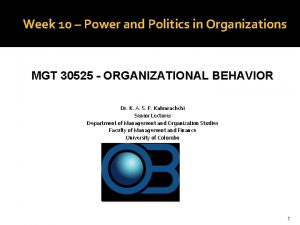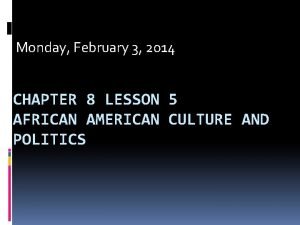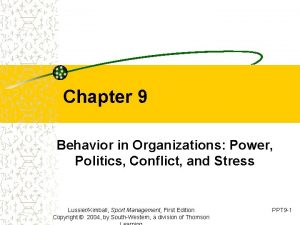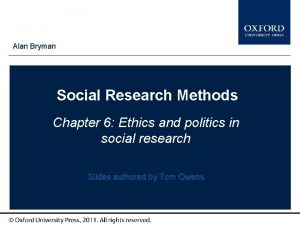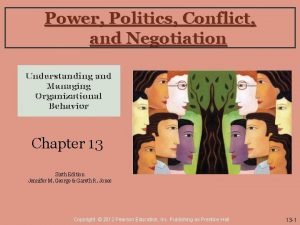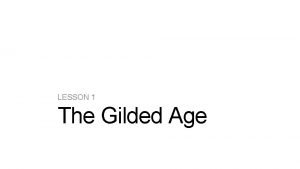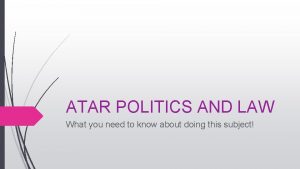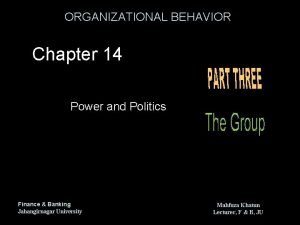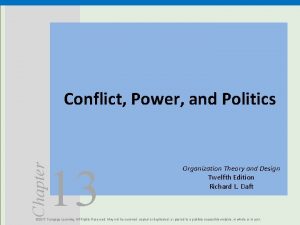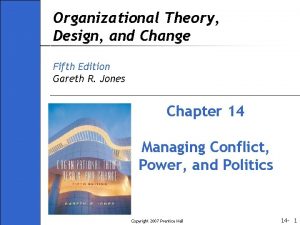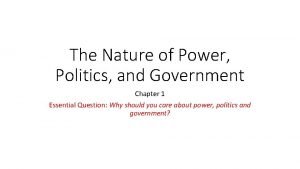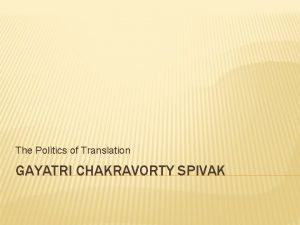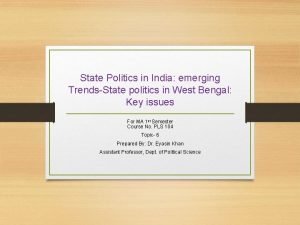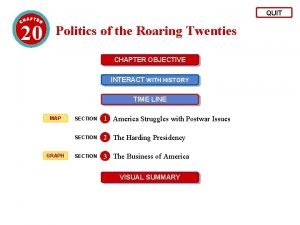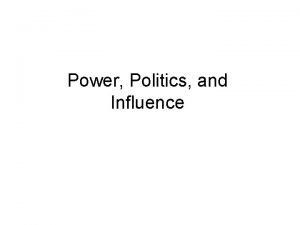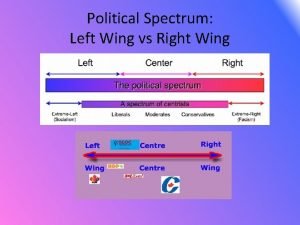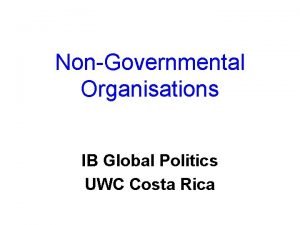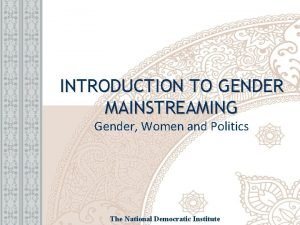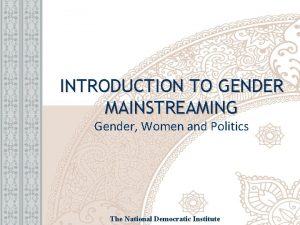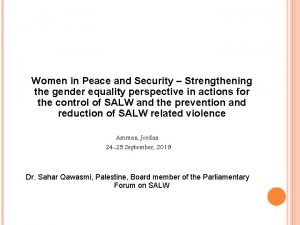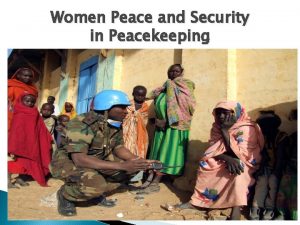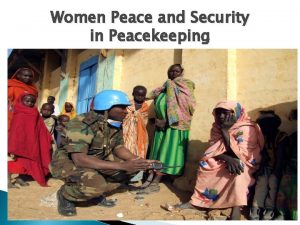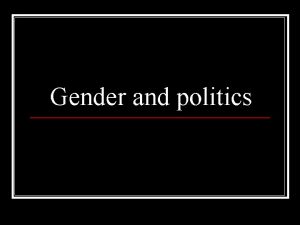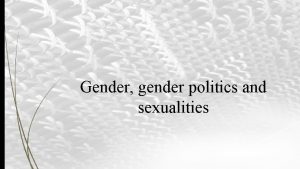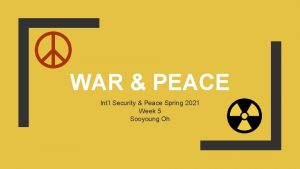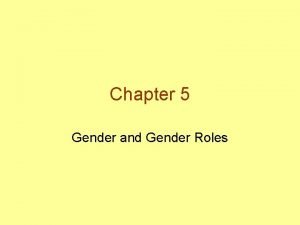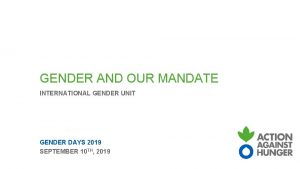WOMEN PEACE AND SECURITY Gender Women and Politics














































- Slides: 46

WOMEN, PEACE AND SECURITY Gender, Women and Politics The National Democratic Institute

INTRODUCTIONS/ GROUND RULES • Introductions • Ground Rules • Ice Breaker Exercise Photo: Sanja Gjenero for rgbstock. com

WOMEN, PEACE AND SECURITY OBJECTIVES • Increase awareness of international instruments related to women, peace and security • Understand why women must be involved in peace processes • Consider how women can engage

WOMEN, PEACE AND SECURITY TOPICS • Why women must be involved • Statistics • UNSCR 1325/associated resolutions • Global indicators • Programming and comparative examples

KEY TERMS • Conflict • DDR • Gender-based violence • Mediation • Negotiation • Peace building • Peace keeping Peace making Peace operations Security Sexual violence Truth and reconciliation commission • Other terms? • • •

EXERCISE: WHY WOMEN? • Why should women be involved in peace processes and security operations? Photo: Ab Aziz, NDI

WHY WOMEN? • • • Committed to peace building Unique perspective Inclusive/consensus-based leadership Work across divides Access and influence

WHY WOMEN? • Suffer disproportionately • Peace agreements have a better chance of success • Transforming power relations • Seat at the table Photo: Michael Angelo, Wonderland

WHY WOMEN? “The systematic exclusion of women from the negotiation of peace agreements and implementing bodies is one of the key reasons why so many of these agreements ultimately fail and countries return to conflict. ” ~ Don Steinberg, USAID Photo: USAID

EXERCISE: ANGOLA CASE STUDY • Gender neutral? • “Nothing about us without us” Photo: J. F. Housel, CARE Map: www. graphicmaps. com

FACTS: WOMEN IN PEACE PROCESSES • In 24 major peace processes, women were: – 8% of negotiators – 3% of mediators – 2. 5% of signatories • No women have been appointed lead mediators in UN peace talks

FACTS: SEXUAL VIOLENCE • Rwandan genocide: 250, 000 – 500, 000 raped • Bosnian war: 20, 000 – 50, 000 raped • Sierra Leone: 50, 000 – 64, 000 sexually attacked • DRC: More than 200, 000 raped Photo: Amel Emric, AP

FACTS: SEXUAL VIOLENCE • Out of 300 peace agreements over 20 years, 18 addressed sexual violence “In no other area is our collective failure to ensure effective protection for civilians more apparent…” Ban Ki-Moon

FACTS: CITIZEN SECURITY • Civilians vast majority of victims • Women and girls targeted as war tactic “It is now more dangerous to be a woman than to be a soldier in modern conflict. ” — Patrick Cammaert Photo: Paula Bronstein/Getty Images Asia. Pac

FACTS: WOMEN COMBATANTS • “Uniformed” armies • “Irregular” armies • Child soldiers: 40% are girls Photo: Saurabh Das, AP

FACTS: TRUTH AND RECONCILIATION COMMISSIONS • • Women as witnesses – not victims Focus on violations in public sphere Women’s experiences ignored “Gender neutral” approach Photo: Iris Films

CEDAW • Convention on the Elimination of All Forms of Discrimination Against Women • International bill of rights for women • Defines discrimination • Establishes legal standards for gender equality • Legally binding • National reports

CEDAW State parties required to: • Incorporate gender equality and nondiscrimination in laws • Establish institutional protections • Advance gender equality • Eliminate discrimination by private persons and organizations

UNSCR 1325 • First United Nations Security Council resolution (UNSCR) to link women to peace and security agenda • Adopted unanimously in 2000 Photo: www. peacewomen. org • Recognizes that women are disproportionately affected

UNSCR 1325 The participation of women in: • national, regional and international institutions • conflict prevention, management and resolution mechanisms • peace negotiations • peace operations • as Special Representatives

UNSCR 1325 The protection of women and girls from sexual and gender-based violence • in emergency and humanitarian situations • through training of peace operations personnel on the rights of women and girls and protection measures Photo: Theresa Donnelly, U. S. Pacific Command Public Affairs

UNSCR 1325 The prevention of violence by: • prosecuting violators • respecting civilian and humanitarian nature of refugee camps • excluding sexual violence crimes from amnesty • strengthening women’s rights under national law • supporting women’s peace initiatives

UNSCR 1325 The mainstreaming of gender perspectives by: • appointing Gender Advisors • considering the needs of women and girls in policy development • incorporating women’s organizations Photo: NDI

SUBSEQUENT RESOLUTIONS • 1820 (2008) recognizes conflict-related sexual violence • 1888 (2009) strengthens implementation of 1820 Photo: peacewomen. org

SUBSEQUENT RESOLUTIONS • 1889 (2009) addresses obstacles to women’s participation in peace processes and peace building • 1960 (2010) provides accountability for implementation of 1820 and 1888 Photo: Eskinder Debebe, UN

UNSCR 1325 AND CEDAW: DIFFERENCES • CEDAW – addresses women’s needs from human rights perspective – provides entry points, specific steps • 1325 – provides political framework – does not provide detailed guidance

GLOBAL INDICATORS • Indicators are signposts of change • 26 indicators around 4 pillars: Ø Prevention Ø Participation Ø Protection Ø Relief and recovery

PILLAR 1: PREVENTION • Incident of sexual violence • Extent to which missions include info on violations in reports a) Number of violations that are reported, referred and investigated b) Number of women in national human rights bodies • Percentage of cases of exploitation and abuse by peacekeepers and humanitarian workers that are referred, investigated and acted upon

PILLAR 2: PARTICIPATION • Peace agreements with provisions to improve the security/status of women • Number and percentage of women in senior UN decision-making positions • Level of gender expertise in UN decisionmaking • Level of participation of women in peace negotiations Photo: Andi Gitow, UN

PILLAR 3: PROTECTION • Index of women’s and girls’ physical security • Extent to which national laws protect women’s and girls’ human rights • Level of women’s participation in justice and security sectors • Existence of national mechanisms for control of arms and weapons • Percentage of women in economic recovery programs

PILLAR 4: RELIEF AND RECOVERY • Maternal mortality • Primary and secondary education enrolment rates • Extent to which strategic planning incorporates gender analysis, targets, indicators and budgets • Proportion of funding to CSOs spent on gender issues Photo: Paula Bronstein, Getty Images

OPPORTUNITIES FOR ENGAGEMENT • • • National action plans Shadow reports Awareness building Consultations Workshops Training negotiators Photo: NDI

NATIONAL ACTION PLAN (NAP) Why create a NAP? • Articulate priorities • Coordinate across government • Raise awareness • Promote accountability • Basis for monitoring and evaluation

HOW TO DEVELOP A NAP 1) 2) 3) 4) 5) 6) 7) Build political will Get organized Conduct an assessment Hold consultations Draft NAP Input on draft Finalize and publicize

NAP CONTENTS • • • Introduction and rationale Long- and short-term objectives Specific initiatives Timeframe Monitoring and evaluation Budget

EXERCISE: REVIEWING A NAP

SHADOW REPORTS • 4 -year reporting cycle • NGOs submit “shadow reports” • Attend committee meetings • Participate in consultations • Promote accountability

BUILD AWARENESS • Use existing resources and networks to educate women about their rights • Translate 1325 into local languages • Increase awareness among illiterate women

BUILD AWARENESS • Use media – Radio broadcasts – Social media: Facebook, Twitter, You. Tube • Engage in internet advocacy • Tap into existing internet resources such as www. peacewomen. org

CONSULTATIONS • Identify issues and flag gaps between policy and practice • Don’t forget men! • Communicate recommendations

WORKSHOPS • • Bring together stakeholders Identify common goals Assign responsibility for tasks Determine next steps Photo: NDI

TRAINING NEGOTIATORS • Train women to increase pool of qualified negotiators • Training on mainstreaming gender Photo: Rocio Alvarez, NDI

INCREASING PARTICIPATION IN PEACE PROCESSES • Establish advisory group or appoint dedicated gender adviser • Create opportunities for CSOs to dialogue with decision makers • Guarantee equitable funding • Offer negotiating teams extra seats for women

INCREASING PARTICIPATION IN GOVERNMENT • Demand women’s inclusion in transitional institutions • Support constitutional provisions that guarantee women’s participation • Establish election mechanisms that advance women’s representation • Support electoral systems that require voters to select male and female candidates

EXAMPLES: WOMEN, PEACE AND SECURITY • Pre-negotiation: Afghanistan • Negotiations: Liberia • Post-negotiations: Fiji Photo: NDI

WOMEN, PEACE AND SECURITY REVIEW • Need for women’s participation clear • Women remain marginalized • International instruments promote inclusion • Issues with implementation • Opportunities for engagement • Success stories
 Gender inequality in politics
Gender inequality in politics Strategic gender needs and practical gender needs
Strategic gender needs and practical gender needs Privatesecurity
Privatesecurity Paradigm shift from women studies to gender studies
Paradigm shift from women studies to gender studies Wireless security in cryptography
Wireless security in cryptography Integrity in e commerce
Integrity in e commerce Osi security architecture in network security
Osi security architecture in network security Guide to network security
Guide to network security Explain about visa international security mode
Explain about visa international security mode Electronic mail security in network security
Electronic mail security in network security What is nstissc security model
What is nstissc security model Software security building security in
Software security building security in Security guide to network security fundamentals
Security guide to network security fundamentals Security guide to network security fundamentals
Security guide to network security fundamentals Power and politics in organizations
Power and politics in organizations Challenge in media and information
Challenge in media and information Lesson 5 african american culture and politics
Lesson 5 african american culture and politics Bureaucracy and politics in india
Bureaucracy and politics in india Power politics and conflict in organizations
Power politics and conflict in organizations Ethics and politics in social research bryman
Ethics and politics in social research bryman Power, politics and conflict in organizations
Power, politics and conflict in organizations Philosophy, politics and economics michael munger
Philosophy, politics and economics michael munger The tournament of today
The tournament of today Chapter 31 the politics of boom and bust
Chapter 31 the politics of boom and bust Whose government politics populists and progressives
Whose government politics populists and progressives Polis bsc
Polis bsc Ap gov unit 1 study guide
Ap gov unit 1 study guide Politics and law atar
Politics and law atar Relationship between sports and politics
Relationship between sports and politics Politics and the english language
Politics and the english language Legitimate political behavior
Legitimate political behavior Power and politics organization theory
Power and politics organization theory Power and politics
Power and politics The nature of power politics and government
The nature of power politics and government World politics in a new era
World politics in a new era The politics of translation spivak pdf
The politics of translation spivak pdf The politics of reconstruction chapter 12 section 1
The politics of reconstruction chapter 12 section 1 Parliamentary tradition definition
Parliamentary tradition definition Explain emerging patterns of state politics in india
Explain emerging patterns of state politics in india Politics of the roaring twenties
Politics of the roaring twenties Factors contributing to organizational politics
Factors contributing to organizational politics Factors contributing to organizational politics
Factors contributing to organizational politics Pendleton civil service act
Pendleton civil service act Left vs right politics
Left vs right politics Political power definition
Political power definition Uwc global politics
Uwc global politics Equivocation examples in real life
Equivocation examples in real life














